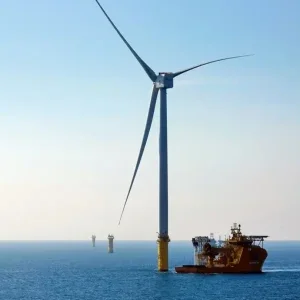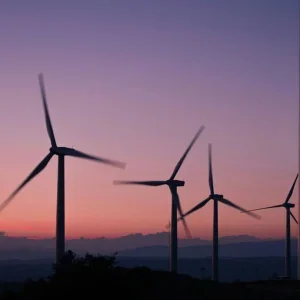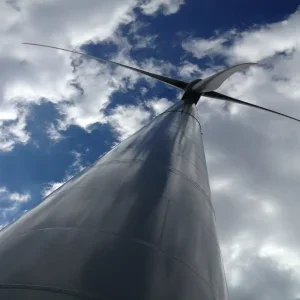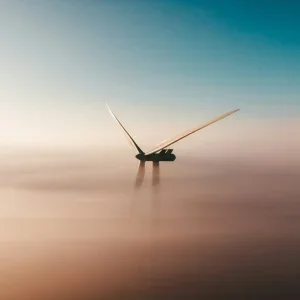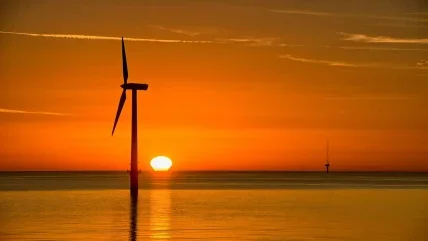
Wind power is one of the oldest sources of energy used by mankind. While windmills were first used to pump groundwater or to grind grains – the earliest examples date from 700–900AD – modern wind turbines generate more than 12% of the world’s electricity today, saving more than a billion tonnes of carbon dioxide from being pumped into the atmosphere. As one of the most efficient, environmentally friendly sources of energy, wind power could naturally help governments reach their climate targets. Yet, its potential for growth in Europe is being restricted by numerous permitting obstacles. These can differ widely between countries, but some of the most common include administrative issues, restricted network availability denoting long waits for grid connections, regulatory barriers and local opposition.
Variously, this might entail a lack of staffing and digitalisation, having no clear single point of contact as a result of multiple authorities being involved, facing lengthy legal challenges, having complex regulations and inflexible permits – for example, not allowing the most up-to-date technology to be used after delays in the permitting process – and community concerns on their construction. It can often take less time to actually build a wind farm than it does to get a grant for one and, as a result, investors are being deterred from developing projects, so many of them fall through.
While significant steps have been taken in Germany to overcome such hurdles, wind development is still moving slowly. In the first six months of 2022, only 235 new turbines were installed there, and there was a 15% decline in permits granted in 2021. To achieve the government’s target of employing 80% renewable electricity by 2030, about 1,750 turbines would need to be built each year – but currently the permitting process alone takes on average two years. This means that it takes between five and seven years from the point of the first filing until the actual grid-integration of a single turbine, which is too slow to meet the targets.
Small steps
“The [German] government has announced a law aimed at accelerating this process as far back as late 2021, when the coalition took office. It is ensconced in the coalition agreement – however, we are yet to see actual progress,” explains Wolfram Axthelm, the managing director of the German Federal Wind Energy Association (BWE). “First steps have been made with a decision [in March] that governs the implementation of the Council Regulation (EU) 2022/2577 for laying down a framework to accelerate the deployment of renewable energy,” Axthelm notes.
“Additionally, zoning also remains an issue. The target of reaching a goal of net 2% of the German area for wind energy is one that we support. However, currently this can only be achieved in two steps: getting to 1.4% by 2027 and then 2% by 2032. This would essentially force authorities to busy themselves with the same issue for almost 10 years. BWE therefore calls on the government to scrap the two-stage process and instead aim for achieving the goal earlier. We believe that 2025 is an achievable goal.”
1,750
Number of new turbines that would need to be built each year to meet the German government’s target of employing 80% renewable electricity by 2030.
WindEurope
The federal states are now tasked with putting the changes made by the government in Berlin into action and delivering the necessary number of permits. But while some obstacles have been addressed on the federal level, the permitting process mostly takes place on the state level, slowing things down further. In 2023, a record 12.84GW will be available in the tender rounds, and, as Axthelm notes, “it is imperative that by the end of the year, at least 10GW of permits are available to ensure that the expansion of German wind power can happen on the necessary scale”. Indeed, only total of 2,403MW was added last year, which includes 423MW of repowering capacity.
235
The number of new turbines installed in Germany in the first six months of 2022, after a 15% decline in permits granted in 2021.
Clean Energy Wire
Reduce reliance on Russia
With the continent’s move away from a reliance on gas provided by Russia following its invasion of Ukraine, the need for reliable, renewable energy has become all the more vital. The EU currently aims for renewables to account for 40% of its energy by 2030 – although a higher 45% target has been proposed to help ease Europe’s energy crisis.
“The energy crisis has made clear to politicians and investors that we can’t rely on fossil fuels, whether that is coal or gas,” says Harriet Fox, energy and climate analyst at Ember, an independent energy think tank. “We’re now seeing a sense of urgency that we need to continue putting more renewables on the ground. However, policies must be put in place to ensure this growth can materialise, and wind needs more support to rapidly expand supply chains and deliver on targets.”
In the past year, many countries have committed to higher renewable ambitions and this growth is expected to continue, but as Fox states, “Europe needs to focus on getting out of the blocks and reaching 2030 targets first, as current trajectories show there is still a lot more to be done.”
There has certainly been a shift in the public discussion around where we get our energy. Whereas before, the discussion was mainly centred around the question, “How much do we really need renewables?” – now it is about how they can be scaled up as fast as possible. “As the energy crisis and the war in Ukraine have demonstrated, states need to find answers to the question of how they can secure their energy supply without being dependant on other states,” Axthelm reflects. “Unless a state is itself very rich in fuel resources, the only way to achieve this energy sovereignty is through the expansion of renewable energies. Wind energy is the second most cost-efficient renewable energy source, the first being solar power. This makes wind power an ideal source for a fast scaling-up of renewables.”
In 2022, onshore wind farms accounted for about 90% of new installations in Germany, Sweden, Finland, Spain and France, but nearly all of these were at greenfield sites, rather than old wind farms being repowered. Subsequently, there have been calls to EU members to incentivise the repowering of older onshore wind farms, which are able to triple the output with 25% fewer turbines. “Wind farms that are eligible for repowering are usually 20 years old,” explains Axthelm. “In that timespan, the average power yield of turbines has quadrupled. Repowering therefore offers the unique chance of quadrupling the installed generation capacity on sites that are well-established. By the end of 2027, 18.3GW worth of wind farms will be eligible for repowering – this means that there is a capacity for almost 60GW of additional yield. This chance should not go unused.”
Wind farm developers in the EU added a total of 15GW in capacity in 2022 – a third more than the previous year. However, this figure still falls short of what is needed for Europe to achieve its targets, with about 80GW of wind energy projects currently stuck in permitting procedures across Europe. This delay can impact investment for developers. As Fox notes: “Investment in wind farms in Europe fell in 2022 due to high inflation and market uncertainty – investors want stable conditions and reassurance.”
Reasons for optimism
Reassessing the German government’s goal of producing 80% of electricity from renewable sources by the year 2030, Axthelm points out that currently, this stands at around 50% – not an insignificant number. “In the future, renewable energy will play an even larger role as the industry and other sectors will steer away from their dependency on fossil fuels and switch to clean electricity,” Axthelm says. He gives the traffic sector as an example: “With the [European] commission’s plans to end the sale of cars with combustion engines by 2035, electric cars will become the new standard. This will create a higher demand for electric power, which in turn will need to be generated from renewable sources. We can expect renewables to become even more ubiquitous.”
Across Europe, some steps have already been taken to address the delays, with the EU instating emergency legislation in December 2022, which will last 18 months and labels renewables projects as being of “overriding public interest” for the first time, explains Fox. “The process for repowering existing projects has also been sped up, which should unlock some extra capacity fairly quickly,” she says, concluding that “countries need to identify priority areas where permitting can be streamlined, start planning long-term grid expansion and investment, and improve auction design to deal with rising supply chain costs and market uncertainty.”


